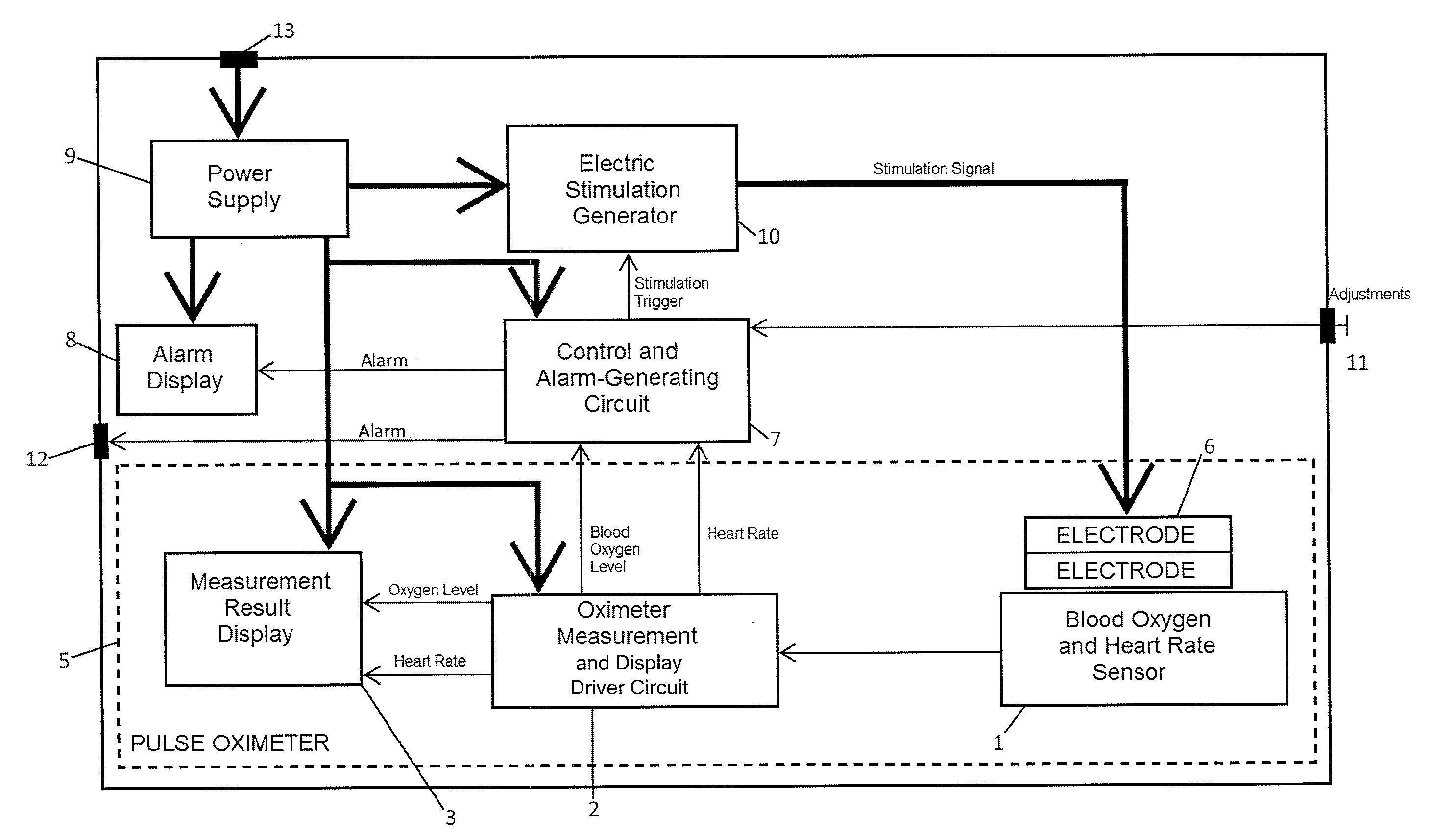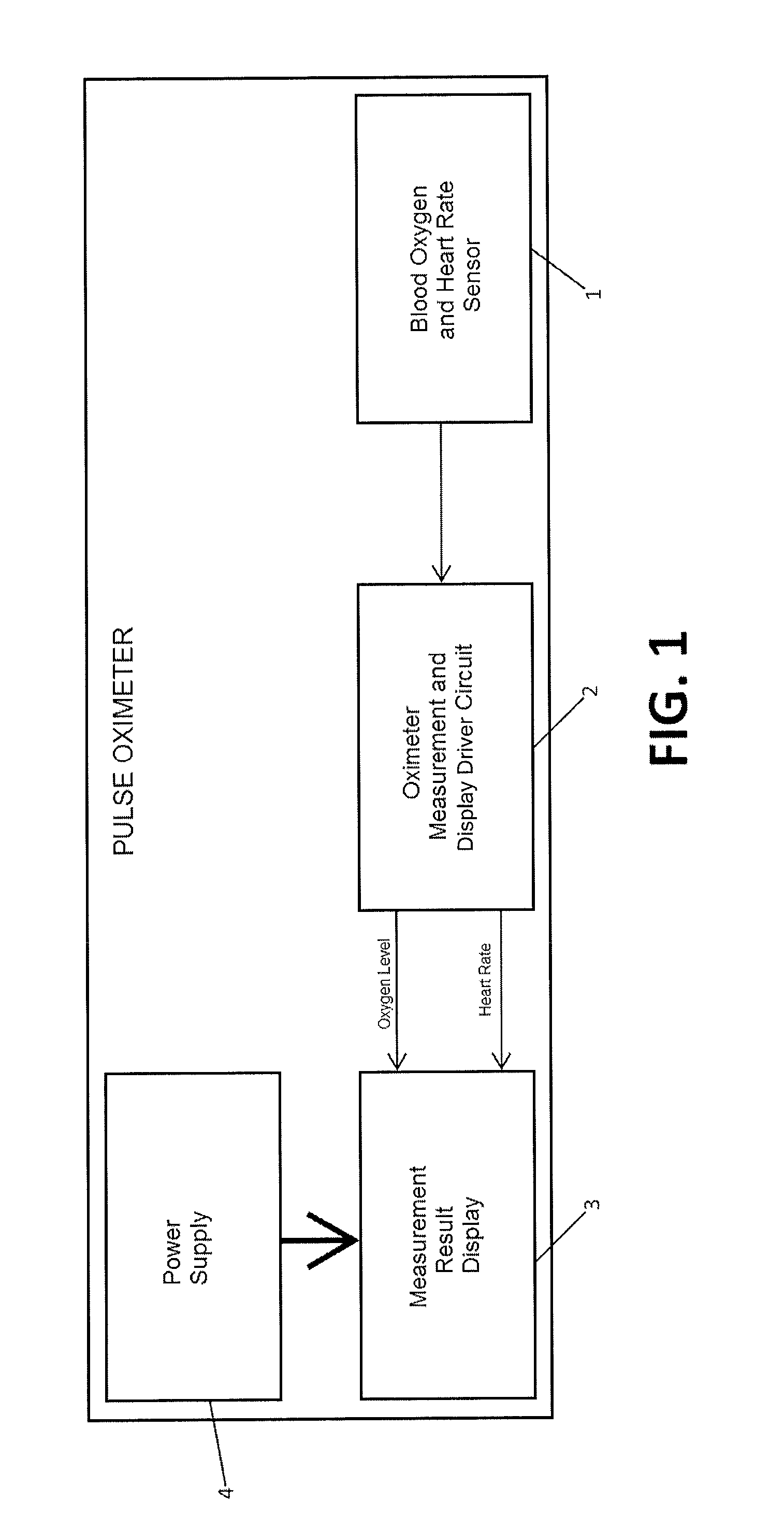Non-invasive, wireless, portable device applicable to the finger to reduce the risk of sudden infant death syndrome and reduce the risk of apnea, slower heart rate, and heart arrest in all age groups
a portable device and non-invasive technology, applied in the field of non-invasive, wireless, portable devices applicable to the finger, can solve the problems of increasing cost, weight and power consumption, and patient movement, and avoiding the effect of apnea and heart arres
- Summary
- Abstract
- Description
- Claims
- Application Information
AI Technical Summary
Benefits of technology
Problems solved by technology
Method used
Image
Examples
Embodiment Construction
[0034]The present invention comprises a non-invasive, wireless, portable device that is placed on the distal end of a finger (see FIG. 4) and which measures blood oxygen saturation and heart rate by means of a pulse oximeter contained therein. In a first embodiment of this invention, in which patients use it when being asleep, as soon as any of these physiological parameters is detected to be out of a patient-predetermined range, the device releases a slight electric discharge on the finger, making the person change his position while sleeping and putting an end to the apnea episode or normalizing the heart rate. On the other hand, in a second usage embodiment in which patients use it while being awake, by reducing the heart rate, it releases an electric discharge and prevents them from falling asleep, which is extremely useful for drivers of any risky machinery and, particularly, any private or public transport means.
[0035]With reference to FIG. 1, a typical pulse oximeter is forme...
PUM
 Login to View More
Login to View More Abstract
Description
Claims
Application Information
 Login to View More
Login to View More - R&D
- Intellectual Property
- Life Sciences
- Materials
- Tech Scout
- Unparalleled Data Quality
- Higher Quality Content
- 60% Fewer Hallucinations
Browse by: Latest US Patents, China's latest patents, Technical Efficacy Thesaurus, Application Domain, Technology Topic, Popular Technical Reports.
© 2025 PatSnap. All rights reserved.Legal|Privacy policy|Modern Slavery Act Transparency Statement|Sitemap|About US| Contact US: help@patsnap.com



